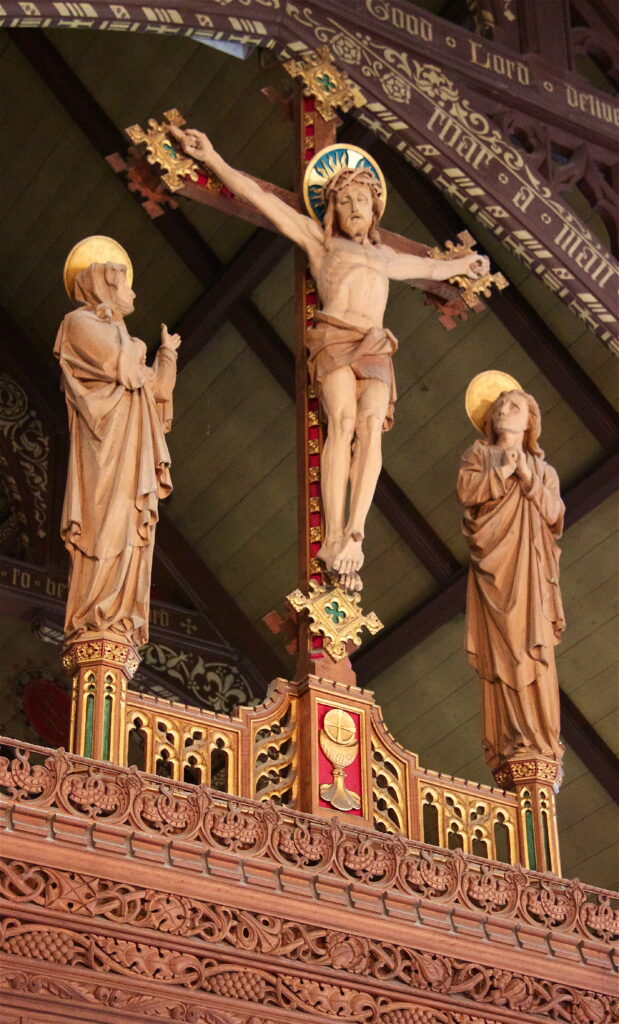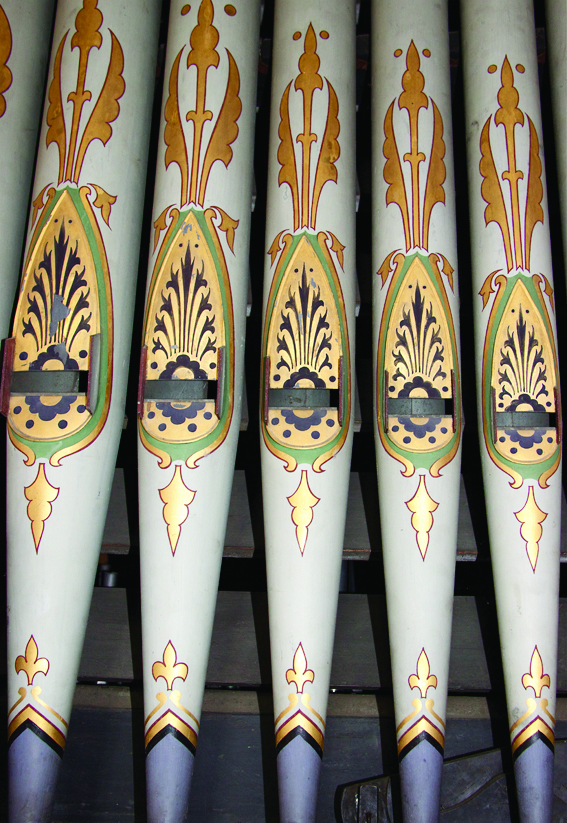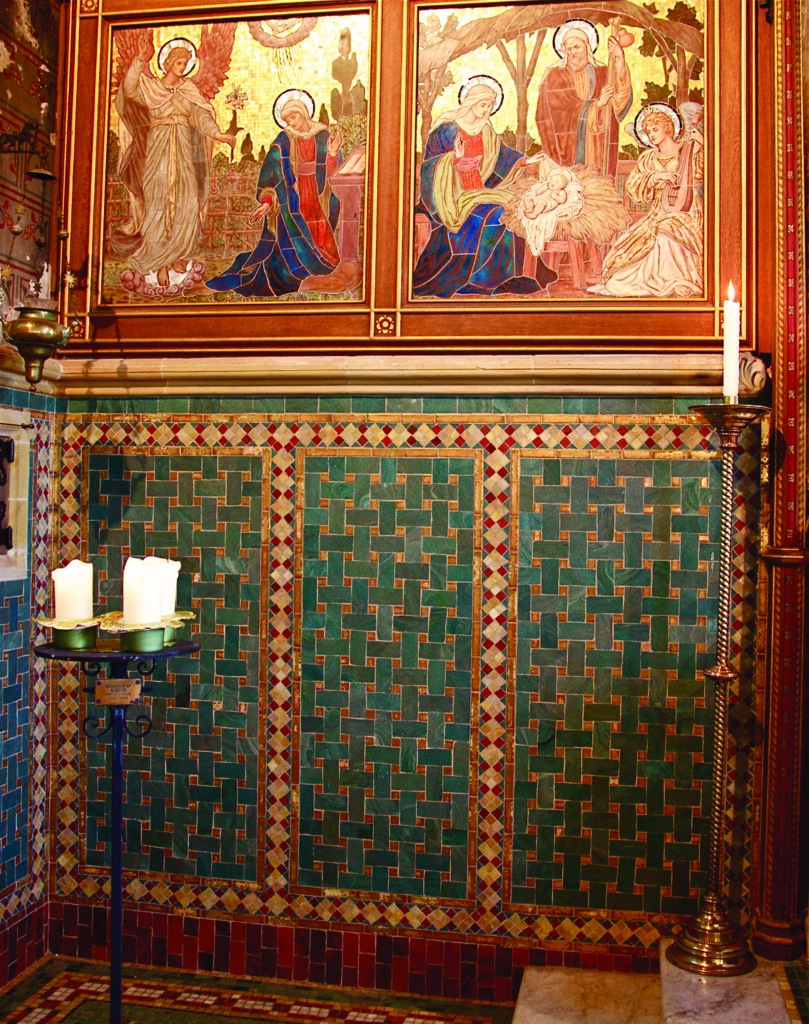History of the Church of St Augustine of Canterbury, Flimwell
Consecrated in 1839, the Parish Church of St Augustine of Canterbury, at Flimwell, was erected on what was then known as the Furzy Fields, and was completed in 1839.
The project was made possible by the generosity of four people, who also contributed largely to the original endowment of the benefice. They were RICHARD BURY PALLISER (then owner of Seacox Heath), The Reverend RICHARD WETHERALL of Pashley, GEORGE CAMPION COURTHOPE of Whiligh, And JAMES LAMBERT of Hawkhurst.
The building as originally erected was much smaller than it is today, and consisted only of what now constitutes the Nave. The Tower was only a squat, flat-roofed appendage without a spire. lt was from the roof of the Tower that Sir J.F.W. Herschel, the famous astronomer who lived at Hawkhurst, made many of his observations. The shingled Spire was added in 1872 at about the same time that the present Chancel was built.

The Tower contains four bells: three were given in 1873 by Mrs Creed, and the fourth (the treble) was added a year later at a cost of £40 which was subscribed by the ringers themselves.
In the north-east corner of the Nave stood the capacious curtained pew of Mr Palliser, the squire of Seacox; and underneath was constructed a vault for interment of members of his family. It is in fact still empty, because although a younger son of Mr Palliser was buried in it, his remains were later removed to the Churchyard, where other members of his family lie at rest.
The Chancel was restored and beautified in 1916 by Viscount Goschen, then of Seacox, as a memorial to his only son, the Hon. G.J. Goschen of the 5th Buffs Regiment, who was killed that year in Mesopotamia, aged 22 years. The work included a mosaic wall, the erection of a beautiful carved Chancel screen, filling the east window with stained glass, and the construction of a large Vestry. Other stained glass in the Church commemorates his parents, the first Viscount Goschen and his wife Lucy.
On the north wall of the Nave is a memorial to the men of the parish who gave their lives in the 1914-1918 War. A similar but less elaborate plaque on the same wall commemorates those who fell in the 1939-1945 War.
The parish registers begin with the Baptism on the 9th August 1839 of Henry St Leger, son of Richard Bury Palliser and his wife Jane.
The original Vicarage was located just west of the Church, but was sold in 1965. The Church is built of stone with a slate roof, and is approached from the main road through a lych-gate. Inside, there is a Nave without side-aisles.
Within the Chancel is a small pipe organ, in an alcove on the north side. The pews are mostly of pine, and the floor is part York stone and part tiles. Inside the roof are timber beams and plaster. Near the west end of the Church’s interior is a Font cased in carved modern oak. About sixty individual hassocks (“kneelers”) have been covered with tapestry, each with different hand-worked floral designs.



